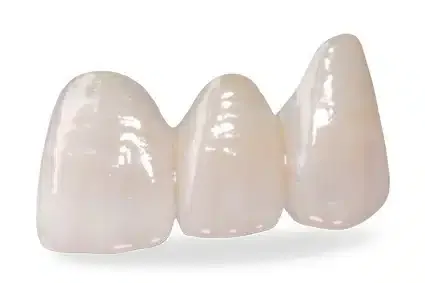Fixed restorations play a pivotal role in modern dentistry, offering durable and aesthetically pleasing solutions for patients with missing or damaged teeth. As an integral part of dental laboratories, fixed restorations involve the creation of prosthetic devices that are permanently attached to natural teeth or dental implants. This article aims to provide a comprehensive guide to fixed restorations, exploring their types, materials, fabrication processes, and the crucial role dental laboratories play in delivering high-quality dental prosthetics.
Types of Fixed Restorations:
- Crowns:
- Crowns are custom-made caps that cover the entire visible portion of a tooth, restoring its shape, size, and strength.
- Commonly used materials for crowns include porcelain-fused-to-metal (PFM), all-ceramic, and all-metal options.
- Advances in technology have led to the development of zirconia and lithium disilicate crowns, offering enhanced strength and aesthetics.
- Bridges:
- Dental bridges are used to replace one or more missing teeth by anchoring the prosthetic teeth to adjacent natural teeth or implants.
- Similar to crowns, bridges can be fabricated from various materials, including metal alloys, porcelain-fused-to-metal, and all-ceramic options.
- Inlays and Onlays:
- Inlays and onlays are partial restorations used to repair teeth with moderate damage, preserving more natural tooth structure compared to traditional crowns.
- Inlays fit within the cusps of the tooth, while onlays extend over one or more cusps.
Materials Used in Fixed Restorations:
- Porcelain-Fused-to-Metal (PFM):
- PFM restorations combine the strength of metal with the aesthetics of porcelain.
- The metal substructure provides durability, while the porcelain outer layer mimics the natural appearance of teeth.
- All-Ceramic:
- All-ceramic restorations are known for their excellent aesthetics and biocompatibility.
- Zirconia and lithium disilicate are popular ceramic materials, offering high strength and natural translucency.
- Metal Alloys:
- Traditional metal alloys, such as gold or silver, are known for their exceptional strength and durability.
- Metal restorations are often used in posterior teeth where strength is crucial.
Dental Laboratory Processes:
- Impression and Model Fabrication:
- The dental laboratory process begins with the reception of an accurate impression from the dentist.
- Dental technicians use the impression to create a precise model of the patient’s teeth and surrounding structures.
- Wax-Up and Design:
- Technicians use the model to create a wax-up, a three-dimensional representation of the proposed restoration.
- The wax-up serves as a blueprint for the final restoration design.
- Casting and Framework Fabrication:
- Depending on the chosen material, the metal or ceramic framework is cast or milled.
- This framework forms the structural core of the restoration.
- Layering and Finishing:
- For porcelain-fused-to-metal or all-ceramic restorations, technicians carefully layer porcelain to achieve the desired aesthetics.
- The restoration is then finished, polished, and adjusted to ensure a comfortable fit.
- Quality Control:
- Before delivery, fixed restorations undergo rigorous quality control measures to ensure they meet both functional and aesthetic standards.
The Role of Dental Laboratories:
Dental laboratories are instrumental in the success of fixed restorations. Skilled technicians, equipped with advanced technologies, collaborate with dentists to create prosthetics that not only restore functionality but also enhance the natural beauty of a patient’s smile. The relationship between dental laboratories and dental professionals is crucial, as effective communication ensures the fabrication of restorations that meet the specific needs of each patient.
Conclusion:
Fixed restorations are indispensable in modern dentistry, providing long-lasting solutions for patients with dental issues. Dental laboratories play a vital role in the creation of these prosthetics, utilizing a combination of traditional craftsmanship and cutting-edge technology. As the field continues to evolve, dental professionals and laboratories must stay abreast of the latest materials and techniques to ensure the delivery of optimal fixed restorations for improved patient outcomes.

